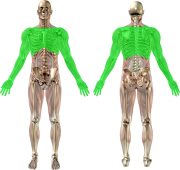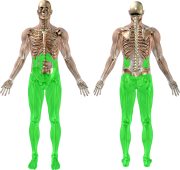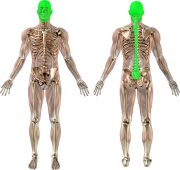Overview:
ANATOMY of TRAUMA™© workshops emphasize thinking outside the box and viewing the body as much more that the sum of it’s parts. The question “What am I really looking at?” is key in assessing each individual and devising the appropriate treatments. The whole person, their history, posture, gait, culture, environment, work, family and beliefs are all important considerations in uncovering the source of pain. ANATOMY of TRAUMA™ is an unique approach to solving core issues
Module 1: The Core
CEUs: 13.5
Topics:
TRAUMA:
- Trauma vs injury.
- Types of trauma: physical, emotional, psychological, spiritual
- Effects of trauma on: body, Self, family, community
- Vectors of force and their ramifications
IMPEDIMEMTS TO MOVEMENT::
- Principals, concepts and laws useful in understanding trauma
- Myofascial chains especially relating to the core structure
- Nerve compression and entrapment
- Factors contributing to pain and/or dysfunction (biomechanical, biochemical, nutritional)
An in-depth manual accompanies each Anatomy of Trauma™© module.
Module 2: UPPER TORSO, ARMS and HANDS

Duration: 27 hours
CEUs: 13.5
In this module participants will learn numerous techniques for dealing with brain injury, head trauma, concussions, whiplashes, migraines, dizziness, nausea, headaches, sequellae of MVAs, balance issues, falls and impacts and tempero-mandibular joint problems, to name a few. Our aim is to provide a deeper understanding of the importance and function of the dural system within trauma and healing.
Topics:
The CRANIUM and the DURAL SYSTEM
An overview of the architecture of the dural system and the cranium including:
- Primary Respiratory Mechanism
- Reciprocal Tension Membrane
- Motility of the Central Nervous System
- Mobility of the cranial bones and the sacrum
- The ‘Breath of Life’
INJURY and TRAUMA
In-depth discussion of trauma focusing on the cranium, dural system and the central nervous system, the involvement of the hypothalamus – the four stages of fight/flight/freeze – and how, when unresolved, the injury /trauma is stored in the body and remains current.
Module 3: LOWER TORSO, LEGS and FEET

Duration: 27 hours
CEUs: 13.5
In this workshop you will learn numerous techniques for the release of the fascia and muscles, of nerve entrapment and compression, of scar tissue and other restrictions. Several modalities including neuromuscular therapy, myofascial release, strain/counterstrain, osteopathy
Module 4: THE CRANIUM and the DURAL SYSTEM

Duration: 36 hours
CEUs: 18.0
Topics:
The CRANIUM and the DURAL SYSTEM
An overview of the architecture of the dural system and the cranium including:
- Primary Respiratory Mechanism
- Reciprocal Tension Membrane
- Motility of the Central Nervous System
- Mobility of the cranial bones and the sacrum
- The ‘Breath of Life’

